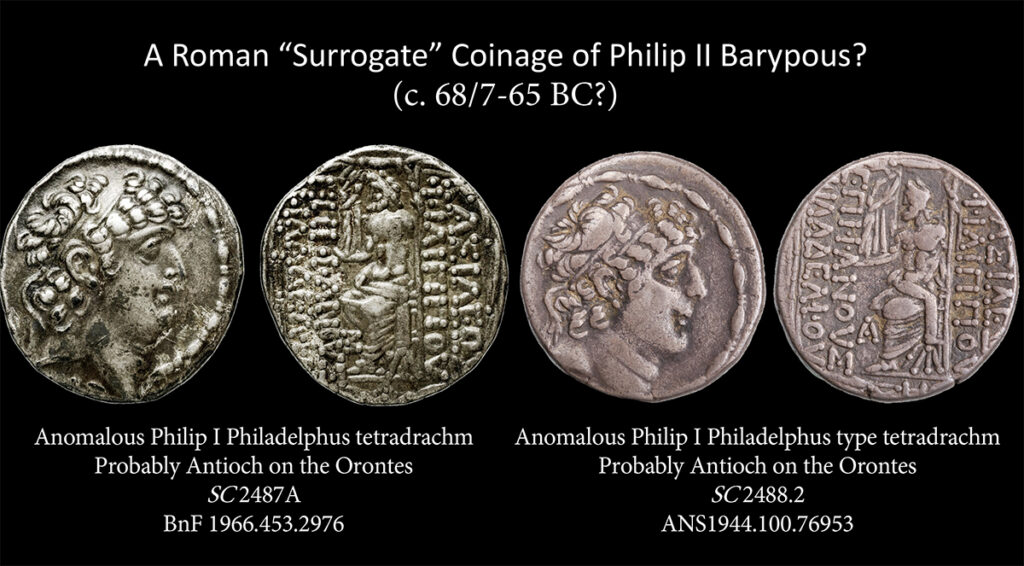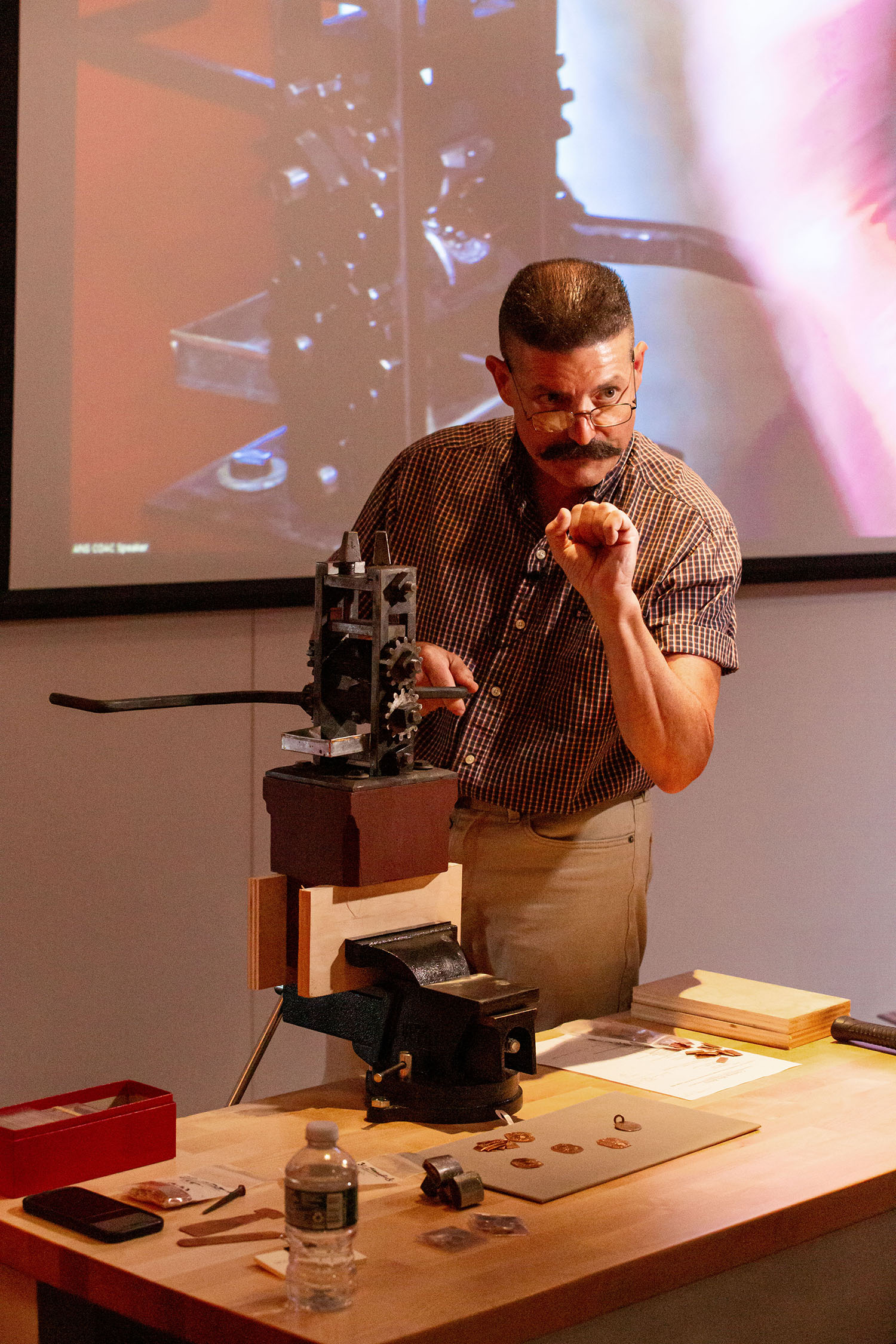Coinage in the Roman Provinces: Conference Highlights, Part 1
For the fact that the Romans did not export their own coinage into the Greek world does not mean that their presence had no effect on existing monetary patterns.
(Crawford 1985, p. 119)

The American Numismatic Society and the PhD Program in History at the Graduate Center, CUNY, had the pleasure of hosting a 3-day conference (March 23–25, 2021) focusing on the coinage produced in the Roman Provinces in the second and first centuries BC (i.e., before the conventional starting date of the Roman Provincial Coinage), as fixed by the authors of RPC in mid-first century BC. The papers, delivered by the foremost scholars in the field, offered a numismatic and historical overview of each region represented by the 4,000 coins included in the R. B. Witschonke Collection. This collection, the catalogue of which will be published in the next months, was assembled by Rick Witschonke, a beloved former ANS Curator and Co-Director of the Eric P. Newman Graduate Summer Seminar, in decades of loving and forward-looking study.


Rick was one of very few scholars who was (almost!) equally interested in the stylistic subtleties of Roman coinage imitations in the Western provinces of the Roman Empire and in the late Hellenistic coinages issued in the East. He also collected Celtic coinages, whose gradual adaptation to the Roman monetary system has been the subject of several important contributions in the last decade (e.g., the fundamental works by J. Van Heesch and S. Martin), but was hardly included in the studies of Roman coinage in the provinces—with the important exception of M. Crawford— before then.

Rick was the one who took to heart the idea of “RPC Zero” (i.e., the study of the coinage issued in the provinces of the Roman Empire in the second and first centuries BC, before the Civil Wars), and organized his collection around this.
As Andrew Burnett points out in a soon-to-be published essay, the broader context of debate about the nature of the coinage and money used throughout the Mediterranean as it fell under Roman power was set by Crawford in his 1985 Coinage and Money under the Roman Republic (CMRR) and then further developed in 1987’s The coinage of the Roman World in the late Republic (CRWLR), edited by Burnett and Crawford. These two books were thus fundamental, as they focused for the first time on the idea of a gradual convergence of local coinages to create compatible monetary systems across the Roman Empire in the second and first centuries BC.
More recently, François de Callataÿ has published several important contributions on the matter, among which his 2011 seminal article More than It Would Seem: the Use of Coinage by the Romans in Late Hellenistic Asia Minor and The Coinages Struck for the Romans in Hellenistic Greece: a Quantified Approach (2016). In these two articles he detailed the idea of local coinages—old and new—struck for the Romans, even if not always in their name. In a 2019 article, Peter Thonemann coined the term of “surrogate coinages” for local coinages “revived” to serve Roman military interests in the eastern provinces of the Empire, using the silver coinage issued by Antiochia on the Maeander in the early first century BC as a case study.

Again, in de Callataÿ’s words, “a most fascinating line of enquiry is to consider large coinages struck suddenly by cities which apparently had little political or economic power. The most reasonable explanation, I believe, must be that, despite their civic appearance, these coinages” (p. 74).
This was precisely the subject of the keynote lecture of the conference, delivered by de Callataÿ on March 23—“Hidden power indeed: the surrogate coinages used by the Romans in Greece and Asia Minor”—which offered an updated overview of new and surrogate coinages issued for the Romans in the East.

The conference session on March 23, chaired by Andy Meadows, continued on the same vein. Lucia Carbone’s paper mostly focused on the contribution of the R. B. Witschonke Collection to the study of the late cistophoric coinage of the Province of Asia, a “surrogate” coinage issued between 133 BC and the 60s BC. In the specific, the newly studied Phrygian cistophoric mint of Laodicea allows to estimate the impact on the local monetary system of the Mithridatic Wars, fought between 88 and 63 BC in the province.


Oliver Hoover focused on other “surrogate” coinages, this time issued in Syria. The first one was very likely produced under the last Seleucid king Philip II Barypous (68/7–65 BC).


Hoover convincingly argued that this coinage could have been produced to support the Roman military effort during the Third Mithridatic War, drawing an interesting parallel to the late cistophoric coinage, that supported the Romans during the first two Mithridatic Wars. He also drew the attention to another apparent “surrogate” coinage, an anomalous Philip I Philadelphus tetradrachm, included in the R. B. Witschonke Collection.

The governor of Syria A. Gabinius (57–55 BC) is known to have struck tetradrachms in the name of Philip Philadelphus, mostly at Antiochia. Judging from metrological and hoard data, the coin in question was probably struck in the 30s BC at an otherwise unknown mint. As already mentioned, the 30s BC are a decade covered by RPC, but this specific coin seems to have followed the standards of “surrogate” coinages, mostly issued in the previous decades.
The following two papers, respectively delivered by Annalisa Polosa and David Hendin, dealt with “new” coinages. Polosa mostly discussed coins issued by the Cilician city of Soli after its re-foundation by Pompey in 67 BC (Plutarch, Pompey 28.4). These coins, bearing Pompey’s portrait, were produced starting in the 60s BC and represent one of the first examples of a Roman magistrate’s portrait on civic coinages.

Hendin’s contribution mostly focused on other coins issued in the area of Decapolis in the Pompeian period. These coins bear the otherwise unattested date “Year 1 Rome.”

The year 1 could not refer other than to the Pompeian Era, which began in 64 BC. These unusual coins should be interpreted either as a military issue or as the product of a mint in the southern part of Syria which came under Roman rule when Pompey arrived in 64 BC. Both these papers, based on coins included in the RBW Collection, highlighted the importance of Pompey’s role in Syria in the transition between “surrogate” coinages issued for the Romans to “new” coinages issued in the name of the Romans.
This is not a rule universally applicable to all the eastern provinces, as exemplified by “new” coinages issued in Macedonia and Greece in the second and early first century BC (e.g., “Quaestor” issues in Macedonia, Thasian-type tetradrachms), but certainly Pompey played a fundamental role in the transition between “surrogate” and “new” coinages for the provinces of Asia and Syria. Summarizing, the papers of the first day of the RBW Conference, mostly focused on the “surrogate” and “new” coinages (according to Thonemann’s definition) issued in the eastern provinces of the empire.
Part 2 of this 3 part post was published on Tuesday, April 13, 2021.




